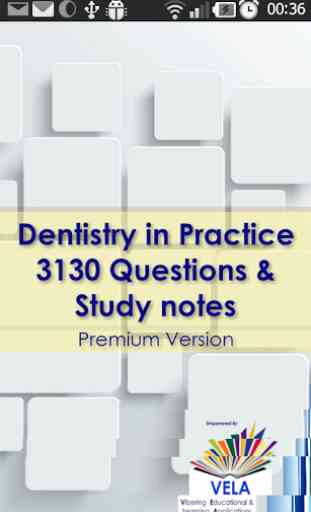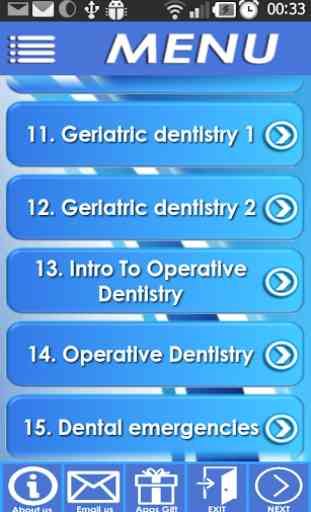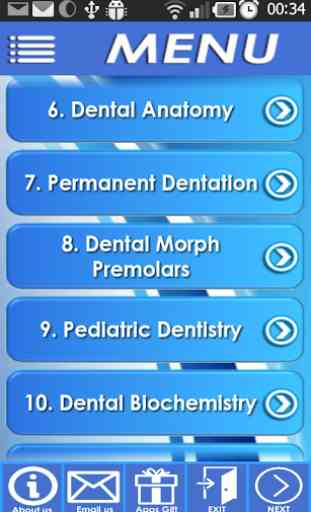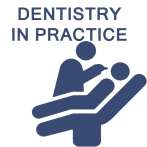Dentistry in Practice free
This application contains the following chapters:
1. Fundamentals of dental practice2. History of Dentistry3. Dental Glossary4. Preventive Dentistry5. Dental Terminology6. Dental Anatomy7. Permanent Dentation8. Dental Morph Premolars9. Pediatric Dentistry10. Dental Biochemistry11. Geriatric dentistry 112. Geriatric dentistry 213. Intro To Operative Dentistry14. Operative Dentistry15. Dental emergencies16. Dental Infection Control17. Applied Dental Materials18. Dental Implant materials19. Oral Cancer20. Periodontics21. Periodontal Surgery22. Dental technician.
Dentistry is the branch of medicine that is involved in the study, diagnosis, prevention, and treatment of diseases, disorders and conditions of the oral cavity, commonly in the dentition but also the oral mucosa, and of adjacent and related structures and tissues, particularly in the maxillofacial (jaw and facial) area.
The history of dentistry is almost as ancient as the history of humanity and civilization with the earliest evidence dating from 7000 BC. Remains from the early Harappan periods of the Indus Valley Civilization (c. 3300 BC) show evidence of teeth having been drilled dating back 9,000 years.[3] It is thought that dental surgery was the first specialization from medicine
Some dentists undertake further training after their initial degree in order to specialize. Exactly which subjects are recognized by dental registration bodies varies according to location. Examples include:
Dental public health – The study of epidemiology and social health policies relevant to oral healthEndodontics (also called endodontology) – Root canal therapy and study of diseases of the dental pulp and periapical tissues.Oral and maxillofacial pathology – The study, diagnosis, and sometimes the treatment of oral and maxillofacial related diseases.Oral and maxillofacial radiology – The study and radiologic interpretation of oral and maxillofacial diseases.Oral and maxillofacial surgery (also called oral surgery) – Extractions, implants, and surgery of the jaws, mouth and face.[nb 2]Orthodontics and dentofacial orthopedics – The straightening of teeth and modification of midface and mandibular growth.Periodontology (also called periodontics) – The study and treatment of diseases of the periodontium (non-surgical and surgical) as well as placement and maintenance of dental implantsPediatric dentistry (also called pedodontics) – Dentistry for childrenProsthodontics (also called prosthetic dentistry) – Dentures, bridges and the restoration of implants. Some prosthodontists further their training in "oral and maxillofacial prosthodontics", which is the discipline concerned with the replacement of missing facial structures, such as ears, eyes, noses, etc.Oral medicine – The clinical evaluation and diagnosis of oral mucosal diseases,Special needs dentistry (also called special care dentistry) – Dentistry for those with developmental and acquired disabilities.Oral Biology – Research in Dental and Craniofacial BiologyForensic odontology – The gathering and use of dental evidence in law. This may be performed by any dentist with experience or training in this field. The function of the forensic dentist is primarily documentation and verification of identity.Geriatric dentistry or Geriodontics – The delivery of dental care to older adults involving the diagnosis, prevention, and treatment of problems associated with normal aging and age-related diseases as part of an interdisciplinary team with other health care professionals.Veterinary dentistry, a speciality of veterinary medicine – The field of dentistry applied to the care of animals
1. Fundamentals of dental practice2. History of Dentistry3. Dental Glossary4. Preventive Dentistry5. Dental Terminology6. Dental Anatomy7. Permanent Dentation8. Dental Morph Premolars9. Pediatric Dentistry10. Dental Biochemistry11. Geriatric dentistry 112. Geriatric dentistry 213. Intro To Operative Dentistry14. Operative Dentistry15. Dental emergencies16. Dental Infection Control17. Applied Dental Materials18. Dental Implant materials19. Oral Cancer20. Periodontics21. Periodontal Surgery22. Dental technician.
Dentistry is the branch of medicine that is involved in the study, diagnosis, prevention, and treatment of diseases, disorders and conditions of the oral cavity, commonly in the dentition but also the oral mucosa, and of adjacent and related structures and tissues, particularly in the maxillofacial (jaw and facial) area.
The history of dentistry is almost as ancient as the history of humanity and civilization with the earliest evidence dating from 7000 BC. Remains from the early Harappan periods of the Indus Valley Civilization (c. 3300 BC) show evidence of teeth having been drilled dating back 9,000 years.[3] It is thought that dental surgery was the first specialization from medicine
Some dentists undertake further training after their initial degree in order to specialize. Exactly which subjects are recognized by dental registration bodies varies according to location. Examples include:
Dental public health – The study of epidemiology and social health policies relevant to oral healthEndodontics (also called endodontology) – Root canal therapy and study of diseases of the dental pulp and periapical tissues.Oral and maxillofacial pathology – The study, diagnosis, and sometimes the treatment of oral and maxillofacial related diseases.Oral and maxillofacial radiology – The study and radiologic interpretation of oral and maxillofacial diseases.Oral and maxillofacial surgery (also called oral surgery) – Extractions, implants, and surgery of the jaws, mouth and face.[nb 2]Orthodontics and dentofacial orthopedics – The straightening of teeth and modification of midface and mandibular growth.Periodontology (also called periodontics) – The study and treatment of diseases of the periodontium (non-surgical and surgical) as well as placement and maintenance of dental implantsPediatric dentistry (also called pedodontics) – Dentistry for childrenProsthodontics (also called prosthetic dentistry) – Dentures, bridges and the restoration of implants. Some prosthodontists further their training in "oral and maxillofacial prosthodontics", which is the discipline concerned with the replacement of missing facial structures, such as ears, eyes, noses, etc.Oral medicine – The clinical evaluation and diagnosis of oral mucosal diseases,Special needs dentistry (also called special care dentistry) – Dentistry for those with developmental and acquired disabilities.Oral Biology – Research in Dental and Craniofacial BiologyForensic odontology – The gathering and use of dental evidence in law. This may be performed by any dentist with experience or training in this field. The function of the forensic dentist is primarily documentation and verification of identity.Geriatric dentistry or Geriodontics – The delivery of dental care to older adults involving the diagnosis, prevention, and treatment of problems associated with normal aging and age-related diseases as part of an interdisciplinary team with other health care professionals.Veterinary dentistry, a speciality of veterinary medicine – The field of dentistry applied to the care of animals
Category : Education

Related searches
Reviews (4)
Sai. M.
Aug 10, 2017
That nice
A. G. u.
Feb 24, 2018
very informative
pha. n.
Jul 28, 2016
Need to pay ==





Good but more is needed to improve